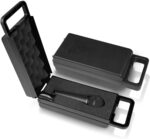Second ever deal for this mic and still the giant slayer for vocal mics
When setup correctly with a pop filter, cheap stand and some EQ, this mic gives 90% of the Shure SM7B sound for 5% of the price
Good info here, here and here
Solid build quality and bundled with a nice case
Requires an XLR cable and audio interface for connecting to a PC (someone in the comments can confirm XLR/USB adapter usage)
If you're disturbed by the SM7B's price and don't want to risk the thousands of cheaper fakes that now litter eBay, get this



 CamelCamelCamel
CamelCamelCamel
Speaking of mics… What ever happened to that OzBargain podcast that a 3rd party approached Scotty about… I would have loved that…